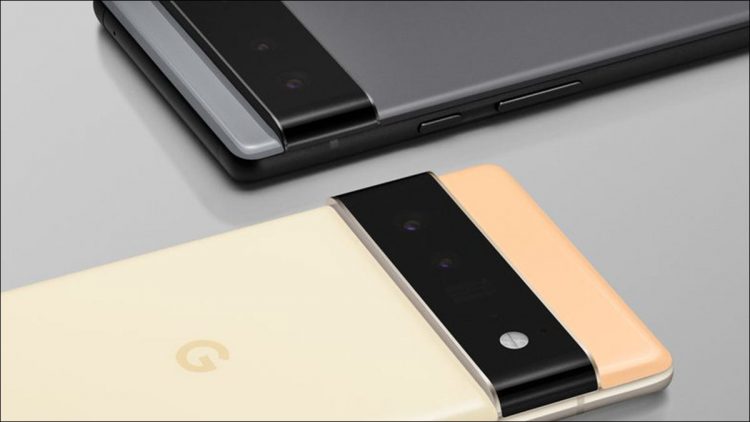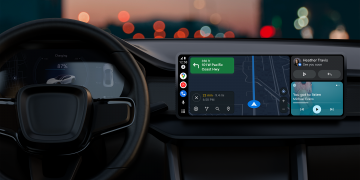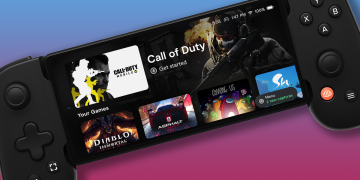Update, 07/26/2022: We’ve reviewed our recommendations and have updated our best budget recommendation with the Google Pixel 6a.
What to Look For in an Android Camera Phone in 2022
If you’re looking for an Android smartphone with a great camera, there are a lot of factors to consider when making the purchase. Many companies try to distract customers with gimmicky features and specs that look good on paper, but they don’t tell the full story.
Companies like Google have taken the software route with their cameras. The search giant’s smartphone line relies on advanced algorithms to produce flagship-quality photographs, and Pixel phones are well-known for their high-quality pictures.
On the other hand, the actual camera hardware is also important. You can have the best smartphone camera software on the market, but if the sensor isn’t capable enough, you’ll hit the ceiling in terms of versatility and quality sooner than you might expect.
Samsung’s a notable participant in the hardware field. Some of its most recent flagship phones have 108MP sensors and periscope telephoto lenses, adding a wide variety of shooting options to its camera app’s arsenal that competitors simply don’t have.
With so many different ways to implement a smartphone camera, it’s our job to break them all down and highlight the best ones. Below, we’ve listed a handful of phones that excel in their respective categories and offer the best balance of hardware and software.
Pros
- ✓ Three great cameras on the back
- ✓ Giant high-res display
- ✓ Excellent battery life
- ✓ Clean software
Cons
- ✗ 3 years of updates is shorter than Samsung
- ✗ Expensive
If you want the absolute best camera you can find on an Android phone, you’d be hard-pressed to go wrong with the Pixel 6 Pro. Pixel cameras have always been great, and this new model has three of them on the back.
However, the thing that continues to set Pixel cameras apart from the crowd is all of Google’s special software features. Features like Portrait Mode, Night Mode, Magic Eraser, Face Unblur, and Motion Photos are amazing. You’re getting so much more than just megapixels here.
Speaking of megapixels, there are a lot of those, too. The main camera is 50MP, it’s joined by a 12MP ultra-wide camera and a 48MP telephoto camera with 4x optical zoom. That means you’ve got a camera for group shots and when you can’t get close enough to something. There’s a camera for every situation!
Aside from just the cameras, the Pixel 6 Pro has a gorgeous 6.7-inch display with 1440 x 3120 resolution and a 120Hz refresh rate. It’s rounded out with a 5,000mAh battery, Google’s own Tensor processor, and 12GB of storage. This is a powerhouse of a phone.
The Pixel 6 Pro costs $900 and it comes with three years of Android updates. That’s not as long as high-end Samsung phones, but you’ll always get updates first. The software is the cleanest version of Android you can find.
Best Android Camera Phone Overall
Best Budget Android Camera Phone: Google Pixel 6a
Pros
- ✓ Shares two cameras with the Pixel 6a
- ✓ Great Google camera software
- ✓ Only $450
Cons
- ✗ Battery life could be better
- ✗ 12MP main camera is getting a bit outdated
- ✗ Only IP67 water resistance
What if you could get most of the same cameras as the Pixel 6 for $150 less? That’s exactly what you can get with the Pixel 6a.
The Pixel 6a has the same main 12.2MP camera that has been a winner for Google for several years. The 8MP front-facing camera is the same as the one on the Pixel 6a along with a secondary ultra-wide camera on the back.
So what’s responsible for the cheaper price? The Pixel 6a doesn’t have the same main 50MP camera as the standard Pixel 6. Instead, you get the 12MP camera from older Pixel models, which is getting outdated. But, you’ll also get access to Google’s fantastic photography software, which will make your photos look great
Regarding other cuts, the 6.1-inch display also has a refresh rate of 60Hz versus the Pixel 6a’s 90Hz. The 6a has 6GB of RAM, whereas the 6 has 8GB. However, they both have Google’s Tensor chip, so for most people, the 6a will work great.
All in all, it’s a pretty sweet deal if the Pixel 6 is pricey for you. You miss out on little things like wireless charging, but camera performance will be spot on.
Pros
- ✓ Five total cameras
- ✓ Ultrawide and two zoom lenses for every situation
- ✓ Super high-end specs
Cons
- ✗ Samsung’s camera software isn’t amazing
- ✗ Very expensive
If you want a phone with everything you could possibly want from cameras, look no further than the Samsung Galaxy S22 Ultra. It has five total cameras—four of them on the back—including a 108MP main camera.
Joining that massive 108MP main camera is a 12MP ultrawide, 10MP 3x telephoto, and 10MP 10x telephoto. The front camera is 40MP. Samsung has set you up to be able to snap nearly any photo. Ultrawide for stepping back to get a lot in the frame, and telephoto lenses to see far-away things.
There are two telephoto lenses so you don’t lose quality when zooming in. You can zoom in 3x or 10x without needing to use digital zoom, which is essentially just cropping a photo. In addition, a new feature with the S22 Ultra is Super Clear Glass lenses to help reduce glare and lens flare.
Beyond cameras, the S22 Ultra is a beast of a phone in every facet. It has a massive 6.8-inch display with 120Hz refresh rate, Snapdragon 8 Gen 1 processor, up to 12GB of RAM, up to 1TB of storage, and a 5,000mAh battery. All of these high-end features will cost you around $1,200 or more. It’s not cheap, but this is as premium as you’ll get.
Best Premium Android Camera Phone
Samsung Galaxy S22 Ultra
If you want great cameras, great performance, and money is no object, the S22 Ultra is the phone for you. This high-end flagship has five powerful cameras to take the best shots.
Best Android Camera Phone in Low Light: Google Pixel 6
Pros
- ✓ Night Sight is phenomenal
- ✓ Astrophotography mode is fun
- ✓ Has two of the cameras from the Pro model
- ✓ Only $600
Cons
- ✗ Lacks a telephoto camera
When it comes to picking a phone that performs best at night, we have to give it to the latest Pixel phone. We’ve already highlighted the Pixel 6 Pro, so we’ll show some love to the smaller Google Pixel 6. It’s all about that Night Sight magic.
Google’s Night Sight feature on the latest Pixel line is perhaps the most impressive setting to ever ship on a smartphone. Once you enable it and stand still for a moment, you can capture some truly breathtaking images at night of practically anything. The system relies on a long exposure and lots of post-processing magic to yank out shots you’d never expect to come from a smartphone.
The company also has a feature coupled with Night Sight called Astrophotography. This feature specifically looks for a starry sky to highlight the miniature lights above and create photos that leave you speechless. Other phones aren’t capable of this kind of photography, since they lack this software feature.
The Pixel 6 doesn’t have as many cameras as the bigger Pixel 6 Pro, but it still has the 50MP main camera and a 12MP ultra-wide camera—you only miss out on the telephoto lens. Plus, it’s a whopping $300 cheaper than the Pro at $600 MSRP, so it’s a fair trade-off.
At the end of the day, Google’s Night Sight and Astrophotography are why the Pixel 5 should be the phone you think of if you’ll be taking lots of photos at nighttime. It’s simply that good.
Best Android Camera in Low Light
Google Pixel 6
Pixel phones are the best when it comes to low-light and the Pixel 6 does the job at an affordable price point.
Best Android Camera Phone for Selfies: Asus Zenfone 8 Flip
 Asus
Asus
Pros
- ✓ 180-degree flip cameras for awesome selfies and video
- ✓ Flagship specs
- ✓ Large screen and battery
Cons
- ✗ No wireless charging
- ✗ Poor software support
- ✗ No CDMA (Verizon) support
This one’s an odd one for sure, but if you’re looking to take the very best-looking selfies, you have to check out the Asus Zenfone 8 Flip.
The reason this device is on our list is due to the hardware that gives it its name—the rear camera set physically flips 180 degrees so it faces you when you want to take a selfie. That means you can use the main 64MP sensor, the 112-degree 12MP ultra-wide lens, and the 8MP telephoto camera to capture some great selfies. You’ll also get much higher quality images since the sensors are intended for primary photography, not just the occasional selfie for Instagram or Snapchat.
Plus, your selfie video will be much better. Asus equipped the cameras with 8K video capture at 30 frames per second, plus advanced stabilization, so your vlogs will be extra sharp.
Asus also includes flagship-level specs in the Zenfone 8 Flip so you don’t have to sacrifice performance. There’s a Snapdragon 888, 8GB of RAM, 128 or 256GB of UFS 3.1 storage, and a 5,000mAh battery. You also get a 6.67-inch Super AMOLED 90Hz display, stereo speakers, fast charging, and an in-display fingerprint reader.
Downsides to the Zenfone 8 Flip include a lack of wireless charging and CDMA carrier support, meaning those on Verizon won’t be able to use the device. Software support is also historically spotty from Asus, so you might be stuck on Android 11 for a while.
Beyond that, if all you want is the best Android device for taking selfies, you shouldn’t skip the Flip.
 Sony
Sony
Pros
- ✓ Extensive video controls with Cinema Pro app
- ✓ Granular audio controls
- ✓ High-end specs w/ a 4K screen
Cons
- ✗ Auto-mode for video isn’t very impressive
- ✗ Not great for average videographers
Those who are serious about capturing video on their phones will love the Sony Xperia 1 III. It’s one of the most premium phones you can get with a list of impressive specs like a 4K OLED screen, Snapdragon 888, 12GB of RAM, and loud stereo speakers. However, it’s the camera department that really stands out thanks to the added capabilities of Sony’s software.
Included on the Xperia 1 III is a wave of professional controls that let you adjust virtually every aspect of the video you want to capture. From ISO to white balance to color grading, you’ll find all the controls a pro could ever want to create the memories and achieve the production level you want. You also get Sony’s Cinema Pro camera app for even deeper control over your video, along with advanced audio controls to nail the sound capture perfectly.
On top of all this, the Xperia 1 III comes with a standard 12MP f/1.7 lens, an ultra-wide 12MP f/2.2 lens, and a periscope-style 12MP f/2.3 telephoto. This hardware, combined with Sony’s innovative camera controls, means you can create some really stunning videos. You can capture everything in up to 4K at 120 frames per second, as well as in a cinematic 21:9 aspect ratio.
The biggest downside to the Xperia 1 III is its lack of consumer-friendly features. There are many controls and features here that will appeal to a more experienced market, not those who just want to point and shoot video. Don’t expect the auto-mode for videos to impress you or a simple snap of the shutter button to capture your next masterpiece without any editing.
Priced at $1,299, the Xperia 1 III is by no means cheap, but if you’re serious about capturing video with your phone, Sony’s latest offering is certainly worth consideration.
Best Android Video Phone
Sony Xperia 1 III
Sony’s flagship phone is has the hardware and software to make some truly breathtaking video. There’s a bit of a learning curve to it all, though!
$1148.00 ![]()
$1298.00 Save 12%
Source by www.howtogeek.com






























